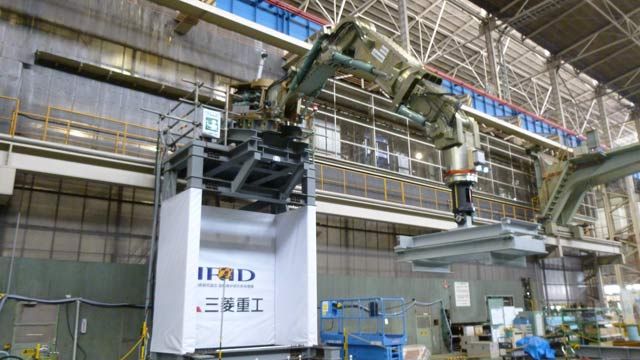MATLAB and Simulink provide specialized algorithms, simulation tools, ROS support, and hardware connectivity for developing robot manipulators.
With MATLAB and Simulink, you can:
- Integrate mechanical designs from CAD with models of the electrical system
- Analyze power consumption to select the most efficient design and trajectory
- Use built-in algorithms and sensor models for robot manipulator applications involving perception and motion planning
- Design robot control algorithms and simulate with a robot model while including a 3D simulation environment
- Evaluate your robot manipulation algorithms by connecting external simulators or real robots
- Connect to and control robots, such as UR Cobots, using MATLAB and Simulink
- Automatically generate production code to deploy to robot controllers and onboard compute boards
- Advance your robotics projects by using provided reference application examples, which encompass the integrated workflows for developing autonomous robotics applications
“With Robotics System Toolbox, we seamlessly connected to and controlled our robot directly from the algorithms we had developed in MATLAB, enabling us to minimize development time. We used the time we gained to further our research into new tactile object recognition algorithms.”
Robot Manipulator Platform Development
Robot manipulator platform development consists of multiple components, including mechanical systems, actuators, electrical systems, and environmental models. With MATLAB and Simulink, you can optimize custom designs and improve algorithms for robot manipulators. MATLAB and Simulink help you:
- Create custom designs using multibody modeling and rigid body trees
- Import designs from CAD models and URDF files
- Load industry standard designs from a robot library
- Integrate designs with electrical, pneumatic, and other actuation systems
- Connect with physics-based simulators for interacting with environment
Robotics Perception
Modern industrial robot manipulators, such as Collaborative Robot (Cobots), require robotic perception for where sensor data and artificial intelligence are involved to perceive the surrounding environment. You can integrate sensor data coming from a single sensor or multiple sensors and develop your robotics perception algorithms using MATLAB and Simulink. MATLAB and Simulink enable you to:
- Connect to sensors and peripherals
- Analyze and compare sensor data to perceive the environment
- Gain insight from image, video, LiDAR, and other types of sensors
- Provide capabilities for classification and detection of objects to grasp
- Estimate an object’s pose and grasp points by using the various computer vision algorithms provided
- Connect to ROS or ROS 2 middleware through ROS network to input sensor data
Tutorials
- Applying AI to Enable Autonomy in Robotics Using MATLAB (20:40)
- Perception: MATLAB and Simulink Robotics Arena
- Developing Autonomous Robots Using MATLAB and Simulink (23:16)
- Using Vision Sensors for Robot Autonomy (8:57)
- Industry Trends and What's Next | Peter Corke on Robotics System Toolbox (5:26)
Robot Motion Planning and Control
Industrial manipulators perform tasks by following a collision-free path within the environment. MATLAB functions and Simulink blocks provide capabilities to plan a safe and efficient motion and control. With MATLAB and Simulink, you can:
- Use functionalities for inverse/forward kinematics and dynamics, motion plan, trajectory generation, and collision checking
- Determine trajectory parameters through optimization calculations
- Implement state control logic by providing capabilities to design state transition diagrams, flow charts, and state transition tables
- Perform trajectory optimization and control using model predictive controls
- Apply reinforcement learning for advanced controls

Tutorials
- Safe Robot Manipulator Control Using Simulink (2:58)
- Controlling Robot Manipulator Joints (24:43)
- Trajectory Planning for Robot Manipulators (18:21)
- Industrial Robots: From Perception to Motion (14:53)
- How to Train Your Robot (with Deep Reinforcement Learning) (37:08)
- Robotics for Smart Factory (3 Videos)
- Empower Your Robots with AI Using MATLAB (39:38)
- Developing an Autonomous Cobot with Multimodal Control Using Model Based Design (20:38)
Learn More
- Pick-and-Place Workflow in Gazebo using ROS
- Pick-And-Place Workflow Using CHOMP for Manipulators
- Visualize Manipulator Trajectory Tracking with Simulink 3D Animation
- Check for Environmental Collisions with Manipulators
- Pick-and-Place Robot Using Forward and Inverse Kinematics
- RRT Planner for Manipulators – Tune the Planner Parameters
- Reinforcement Learning for Ball Balancing Using a Robot Manipulator
Simulation-Based Testing of Robotics Applications
Simulation helps you detect errors at an early design stage in a virtual setting with high repeatability and ease of changing model parameters and reduce the risk and cost of hardware testing. MATLAB and Simulink provide capabilities to:
- Quickly validate robot algorithms with abstract motion models
- Explore the entire design space rapidly using parallel computing
- Apply optimization algorithms to both the controller and plant to find the best design
- Integrate realistic sensors for industrial manipulator applications such as stereo camera, encoder, and torque sensor
- Perform deterministic co-simulation between Simulink and Gazebo
- Validate robot models in real-world simulation environments by interfacing with 3D physics simulators
Explore Product







